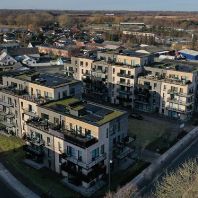Greater transparency on fee structures is needed to secure growing levels of capital to the Asian non-listed property funds industry, according to the first ever report on fees in the region.
The ANREV Management Fees & Terms Asia Study 2011 reports that fee structures lack comparability as non-listed property funds base their charges on a wide variety of type, number and bases of fees. This hinders transparency and makes it difficult for investors to review and compare funds.
"We want to make investing in non-listed property funds as transparent as possible and this report is an important step to achieving this. The industry needs clarity on market practice for fees, so investors can easily asses how fee structures and levels compare to the market average," said Willem de Geus, Managing Director of Morgan Stanley's Real Estate Investment Management Division and Vice Chairman of ANREV.
One example of this lack of comparability is the basis on which annual fund management fees are charged by funds. In the study, 77% of core funds charge this fee on a gross asset value (GAV) basis compared to 18% of value added funds and 3% of opportunity funds. The most common basis is drawn commitment for a value added fund and commitment for an opportunity fund.
"There will always be some variety in the type of fees charged by style due to the nature of investing so ensuring that information is presented clearly should be a key aim for the industry," said Clara Lee, ANREV Research Director. "This is where tools such as total expense ratios (TERs) can be useful in the industry's development in the region."
ANREV supports the use of INREV TER, which is a measure of annual operating costs as a percentage of the value of the assets, which forms part of the fee metrics recommendations in the INREV Guidelines. TER helps investors compare fee loads for funds and enables them to perform fee analysis across their portfolios and as part of their due diligence for new funds.
The use of TERs is still low in Asia with 23% of funds reporting a TER, of which 55% report INREV TER. The high incidence of the use of INREV TER in this small sample is partly due to international fund managers who report to investors consistently on a global basis use INREV Guidelines.
Performance fees are another important tool used by funds to reward outperformance and ensure better alignment between investors and fund managers. Nearly 90% of funds in the survey apply a performance fee either periodically through the life of the fund or on termination. Interestingly, 64% of core funds charge a performance fee. This is unusual as this type of fee structure is normally associated with higher risk/return funds with 92% and 100% of value added funds and opportunity funds charging this fee respectively.
The majority of core and opportunity funds at 56% and 45% respectively charge performance fees periodically through the life of the fund while 45% of value added funds charge the fees at termination.
Fee structures and levels have come under pressure following the financial downturn with investors expecting to see some changes in fee structures of new funds. For example, fewer funds are expected to have fees based on GAV as this is seen as rewarding performance for gearing. Also, performance fees are less likely to be rewarded periodically with preference for payments at termination when the final performance of the fund is known.
With a lower number of funds launching in the last two years, these changes are not yet fully visible in the result of this report but the effects of the financial downturn are expected to show in future reports.
"The support from investors and fund managers for this report is a clear indication that it is a topic the industry needs to address. Further transparency on fees will improve the attractiveness of the funds model and bring greater capital flows to the sector," said de Geus.
The fees study comprises detailed information on the fee structures and fee levels of 86 Asian non-listed property funds fr






